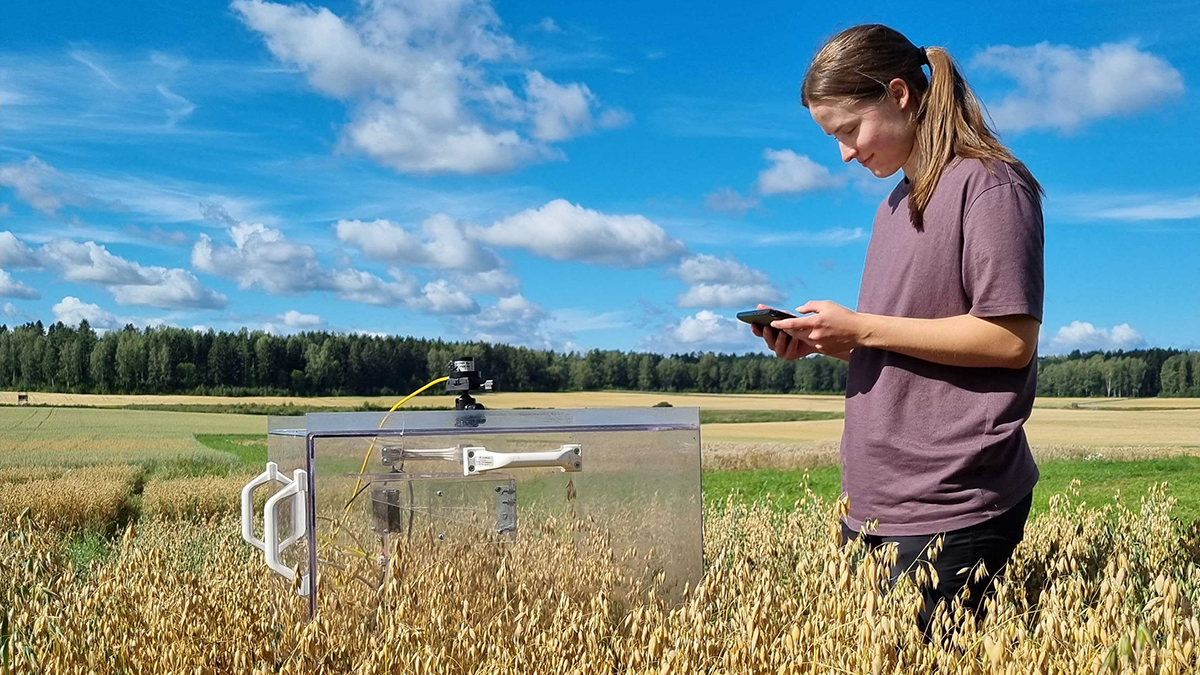Research flagships produce impressive information for society’s needs

The Research Council of Finland’s Flagship Programme responds to societal change and the need to create a broader and more effective cooperation network for research. Flagship is an appropriate name, as the consortiums funded under the programme bring together the most influential actors in each field, both from the private and public sectors. The basic idea of flagships is to achieve the greatest possible scientific, economic and social impact through cooperation.
The Finnish Meteorological Institute is involved in three different flagship consortiums. The ACCC (Atmosphere and Climate Competence Center), in operation since 2020, generates further understanding of climate change and air quality. One of the new flagship ventures, DIWA (Digital Waters), launched in early 2024, produces information on water and snow, while the other one, FAME (Flagship of Advanced Mathematics for Sensing, Imaging and Modelling), harnesses mathematical modelling for the use of different applications.
Flagship consortiums bring together research on specific topics
Traditionally, researchers plan a project and then apply for funding to carry out their research. Alternatively, researchers can participate in research projects that focus on a specific research topic determined by the funder. In the flagship programme, research is approached in a new way. The flagship consortium serves as an umbrella that brings together the highest-quality research in a specific subject. Through a collaborative effort, the consortium implementers devise the most effective strategies and select the most suitable partners.
Finnish research institutes and higher education institutions have already earlier worked in close cooperation with each other and with actors outside the world of research.
“The flagship consortium facilitates the enhancement and broadening of partnerships, enabling substantial and concrete cooperation across diverse research areas,” says Jari Liski, Chief Scientist of the Finnish Meteorological Institute.
The flagship consortium also strengthen collaboration within the research institute. For example, all three fields of research at the Finnish Meteorological Institute participate in the ACCC flagship: climate change research, meteorological and marine research, and the Space and Earth Observation Centre. The cooperation between researchers from multiple sectors has yielded fruitful results, including improved satellite-based inventory methods of greenhouse gas emissions and sinks.
“The Finnish Meteorological Institute is a key actor in developing methods for assessing and comparing greenhouse gas emissions and carbon sinks from the atmosphere, as reported by different states. The methods have been developed by combining satellite measurements and modelling of the carbon cycle and the atmosphere.”
Scientific information leads to new services
All flagship initiatives have strong ties to the business sector. The consortiums are developing solutions that enhance business opportunities for companies. Businesses do not have to wade through scientific articles, as they are offered services based on science.
“The verification of carbon sequestration is one example of climate research. When a company can validate its carbon sequestration and emitting practices through scientific research, it is equipped to make decisions based on researched information – and to also demonstrate this to its partners and customers,” Jari Liski explains. “We are in the process of developing a service with large food companies that can be used to measure and track real-time carbon emissions and sinks in agricultural fields, as well as nitrogen oxide emissions.”
At the societal level, the development of services includes enhancing the national greenhouse gas inventory systems.
“We are developing Finland’s greenhouse gas calculation system in a direction that will shed light on the contributions of farmers who are implementing environmentally-friendly solutions in their work.”
Similar work is being done to develop services in areas such as climate change adaptation, air quality, water resources and energy weather that affects the production of wind and solar energy.
The consortium partners have also shared experiences of cooperation between companies and researchers. Using tried and tested methods will lead to a greater impact and more efficient use of resources.

Impact targets challenge and inspire researchers
Flagship consortiums receive funding for several years at a time, which enables long-term cooperation.The flagship programmes feature the highest level of Finnish scientific expertise, complemented with notable economic and societal impacts.
“The flagship programme creates a significant avenue for fostering advancements in science and technology and to have a positive impact on our society,” says Jari Liski.
The flagship programme has also steered new funding opportunities. Research Council of Finland has directed funding to, for example, doctoral education when 800 doctoral candidate positions have been open for application in the flagship consortiums’ sectors. In addition, a call for funding applications has been organised for those participating in the flagship programme and the Research Council of Finland’s Centres of Excellence with the aim of developing new operating models based on research for the needs of business, public administration and the third sector.
Involvement in a flagship consortium is also a true reflection of expertise. According to Jari Liski, it is a clear representation of top-quality work and collaboration skills, as well as a testament of sorts to the high standard of research.
In addition to conducting high-quality scientific work, researchers are also motivated by the impact of research, which is in a league of its own in the flagship consortiums. According to Jari Liski, it is an inspiring, challenging and weighty responsibility to utilise research to create solutions and services that benefit society without sacrificing scientific integrity.
“The concrete impact targets of the flagship consortium do not come at the expense of science, but rather complement it,” Jari Liski summarises.
The Research Council of Finland’s Flagship Programme
The Finnish Flagship Programme comprises fourteen flagships, whose host organisations include nine universities, six research institutes, Helsinki University Hospital, the Finnish Red Cross Blood Service and CSC - IT Center for Science Ltd.
The Research Council of Finland’s total funding for the Finnish Flagship Programme is almost 300 million euros.
The Finnish Meteorological Institute is involved in the following flagships:
Digital Waters (DIWA) The flagship aims to develop into a top-tier water research cluster and innovation ecosystem that, through its research results, supports decision-making and paves the way for the next revolution in the water sector – digitally. The flagship combines the Finnish Meteorological Institute’s expertise in modelling and mapping the snow cover with other expertise in the water sector in Finland and produces researched information on water resources, the aquatic environment and water management. At the same time, it strengthens cooperation between universities, research institutes and business partners engaged in teaching and research in the water sector. The flagship is led by the University of Oulu, and the participating organisations include the University of Turku, Aalto University, Finnish Geospatial Research Institute, Finnish Environment Institute and the Finnish Meteorological Institute.
Flagship of Advanced Mathematics for Sensing, Imaging and Modelling (FAME) The flagship develops methods of applied mathematics and physics for the needs of society, such as medical imaging, monitoring of industrial processes, testing structures for defects without breaking them, and interpreting satellite data. The Finnish Meteorological Institute uses computational methods, especially in energy weather applications and the mapping of greenhouse gas sources and sinks, utilising satellite observations and inversion modelling. The flagship is led by the University of Eastern Finland, and the participating organisations include the University of Helsinki, LUT University, University of Jyväskylä, Aalto University, University of Oulu, Tampere University and the Finnish Meteorological Institute.
The Atmosphere and Climate Competence Center (ACCC) . The aim is to increase understanding of climate change and air pollution. The flagship consortium promotes international, EU and Finland’s climate objectives by producing scientific data and making it available to various societal actors. The flagship is led by the University of Helsinki, and the participating organisations include the Finnish Meteorological Institute, University of Eastern Finland and Tampere University.
Throughout the spring, we will feature articles on our website that delve deeper into each of the three flagship initiatives.
